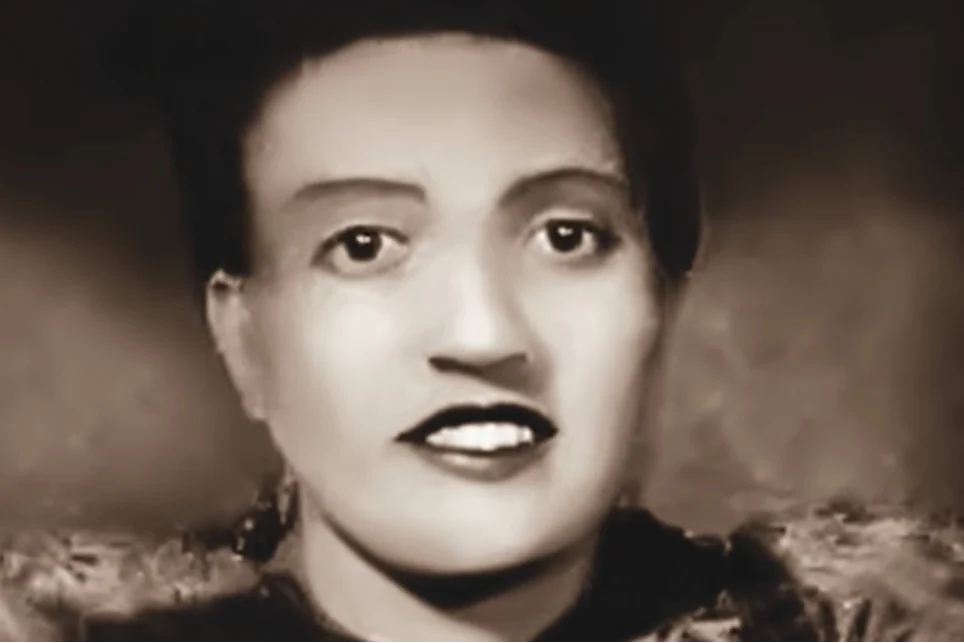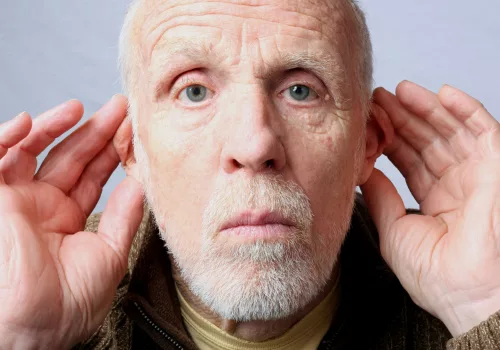In 1951, a young African American woman named Henrietta Lacks visited Johns Hopkins Hospital, one of the few medical facilities at the time that treated Black patients. She was diagnosed with cervical cancer, and during her treatment, a sample of her tumor cells was taken without her knowledge or consent—a common practice at the time. Little did anyone know that these cells would become one of the most significant tools in medical research. The cells, later named HeLa cells after Henrietta Lacks, exhibited an extraordinary quality: they could divide indefinitely under the right laboratory conditions. Unlike normal human cells, which die after a limited number of divisions, HeLa cells are “immortal,” providing scientists with a continuous supply of human cells to study. This unique property revolutionized biomedical research, paving the way for groundbreaking discoveries and making HeLa cells indispensable to science. Henrietta’s story begins in rural Virginia, where she grew up in a community shaped by poverty and segregation. Her journey from obscurity to scientific prominence was not something she could have imagined, yet her cells would leave an indelible mark on medicine. The circumstances under which her cells were taken highlight not only the scientific advancements of the time but also the inequities in medical practices that exploited vulnerable populations. Henrietta’s family lived unaware of her posthumous contributions for decades. The revelation that her cells had transformed global medicine added layers of complexity to their feelings of pride, loss, and injustice. Her legacy became both a story of scientific triumph and a call to rectify historical wrongs.
The Scientific Breakthroughs Enabled by HeLa Cells
HeLa cells have been used in an astonishing array of scientific advancements, many of which have had a profound impact on human health and medicine. Their contributions span multiple fields of research, shaping modern science as we know it. Some of the most notable contributions include:
Polio Vaccine Development
HeLa cells played a critical role in the development of the first effective polio vaccine in the 1950s. Scientists used the cells to test the vaccine’s safety and effectiveness, ultimately helping to eradicate the disease in many parts of the world. The mass production of HeLa cells for this purpose marked the beginning of large-scale cell culture in research, creating a new standard for biomedical studies. There was a time when the fear of polio gripped the world, and the development of an effective vaccine was a monumental achievement.
Cancer Research
As cancer cells themselves, HeLa cells have provided invaluable insights into the mechanisms of cancer growth and metastasis. Researchers have used them to study the effects of radiation, chemotherapy, and other treatments, advancing our understanding of the disease. HeLa cells have also been used to develop drugs targeting specific cancer pathways, saving countless lives. They remain a cornerstone for oncological studies worldwide. The ability to study cancer cells continuously has allowed researchers to experiment with new therapies without the immediate need for human trials, thus speeding up the process of finding potential cures and treatments.
Genetics and Virology
HeLa cells have been instrumental in the study of human genetics and the behavior of viruses. They have been used to map the human genome, enabling breakthroughs in genetic engineering and personalized medicine. Studies on viruses like HIV, Zika, and COVID-19 have relied on HeLa cells to understand viral replication and develop antiviral therapies. The genetic adaptability of HeLa cells has made them a prime model for studying complex diseases. For instance, during the early days of the HIV epidemic, researchers were able to gain insights into how the virus replicated and affected human cells, thanks to HeLa cells.
Space Exploration
In the 1960s, HeLa cells were sent into space to study the effects of zero gravity on human biology. This research has contributed to our understanding of how the human body might adapt to long-term space travel. HeLa cells’ resilience and adaptability have provided key insights into cellular behavior in extreme conditions, helping pave the way for the future of human space exploration. The insights gained from these experiments are crucial as humanity inches closer to the prospect of extended space missions and even colonization.
Vaccines and Drug Development
Beyond polio, HeLa cells have been crucial in testing vaccines for diseases such as HPV, hepatitis, and influenza. They remain a cornerstone of pharmaceutical research, aiding in the development of treatments for conditions ranging from autoimmune disorders to rare genetic diseases. Their versatility has made them a linchpin in preclinical drug trials. As new diseases continue to emerge, HeLa cells offer a reliable model for understanding pathogen behavior and testing potential interventions.
Cellular Mechanisms
HeLa cells have been used to uncover fundamental principles of cell division, DNA repair, and apoptosis (programmed cell death). These discoveries have implications not only for cancer but also for understanding aging, regenerative medicine, and numerous genetic disorders. For example, understanding how cells repair DNA has led to insights into why some individuals may be more prone to certain diseases, paving the way for preventative strategies.
Ethical Controversies and Henrietta’s Legacy
While HeLa cells have been a boon to science, her story raises significant ethical questions. Henrietta Lacks never gave informed consent for her cells to be used in research, as was common practice at the time. For decades, her family was unaware that her cells were being used in laboratories around the world, while pharmaceutical companies and researchers profited from discoveries made using HeLa cells.
The Lacks family’s plight has brought attention to issues of medical ethics, informed consent, and the exploitation of marginalized communities in research. It has sparked important conversations about the rights of patients and the need for transparency in medical practices. Henrietta’s story highlights the systemic inequities that have shaped the history of medical research, particularly for Black Americans and other underserved populations.
In 2013, after years of advocacy, the National Institutes of Health (NIH) reached an agreement with the Lacks family to give them a voice in decisions about the use of HeLa cells in research. This marked a significant step toward acknowledging Henrietta Lacks’ contributions and addressing the ethical issues surrounding her story. The agreement also ensured that some genetic information derived from HeLa cells would be protected, granting the Lacks family a measure of control over their ancestor’s legacy.
Additionally, Henrietta’s story has led to widespread reforms in how informed consent is obtained, especially in clinical trials and biological sampling. Her case serves as a reminder of the balance needed between scientific progress and ethical responsibility. The Lacks family has become a symbol of resilience, advocating for equity in science and honoring Henrietta’s contributions.
The Broader Impact on Research Ethics
The story of Henrietta Lacks has prompted significant changes in research ethics, influencing guidelines that protect human subjects in research today. For one, the Belmont Report, published in 1979, outlines ethical principles and guidelines for the protection of human subjects, emphasizing respect for persons, beneficence, and justice. These principles have become foundational in ethical research practices.
Informed Consent and Modern Practices
Today, informed consent is a cornerstone of ethical research, ensuring that participants are aware of what they are contributing to and any potential risks involved. This practice helps build trust between researchers and the public, ensuring that individuals are treated with respect and dignity. The increased focus on informed consent can be directly traced back to the awareness raised by cases like that of Henrietta Lacks.
Addressing Historical Inequities
Henrietta’s story has also highlighted the need to address historical inequities in medical research. For example, the Tuskegee Syphilis Study, where African American men were misled and denied treatment, has long been cited as a gross ethical violation. The attention brought to these past wrongs has fostered a greater commitment to ethical standards that protect vulnerable populations, ensuring that history does not repeat itself.
Henrietta Lacks’ Enduring Impact
Today, Henrietta Lacks is celebrated as a hero of modern medicine. Her story has inspired books, films, and public recognition, including the bestselling book The Immortal Life of Henrietta Lacks by Rebecca Skloot. In 2021, the World Health Organization posthumously awarded Henrietta Lacks a Director-General’s Award for her enduring contribution to science and humanity. Monuments and scholarships in her honor continue to ensure her legacy is remembered.
The legacy of HeLa cells extends far beyond the laboratory. They serve as a reminder of the ethical responsibilities that accompany scientific progress and the need to honor the individuals behind the discoveries. HeLa cells have not only advanced medicine but also prompted critical reforms in research ethics, shaping modern guidelines that prioritize informed consent and equitable practices.
Henrietta Lacks’ story is a testament to the power of human resilience and the profound impact one life can have on the world. Through her cells, she has contributed to the health and well-being of millions. Her story continues to challenge the scientific community to uphold principles of justice, respect, and equity in all its endeavors. Moreover, her legacy bridges the gap between scientific achievement and human dignity. Henrietta’s name now symbolizes both the potential for discovery and the necessity of doing so with compassion and fairness. Her immortal cells remind us that every breakthrough carries a story, and every story has the power to change the world.
Practical Lessons for Future Research
As we reflect on Henrietta’s legacy, there are practical lessons for researchers, medical professionals, and even patients.
- Building Trust through Transparency: Open communication and transparency in research processes can help build trust with participants. This involves clearly explaining the purpose of research, how data will be used, and any potential risks.
- Community Engagement: Involving community representatives in research planning and decision-making can help ensure that studies are conducted ethically and that the benefits of research are shared with the communities involved.
- Equitable Access to Benefits: Ensuring that the benefits of research, such as new treatments or therapies, are accessible to all, particularly underserved populations, is crucial. This might involve advocating for policies that support equitable healthcare access.
The Future of HeLa Cells in Medical Research
As research methodologies continue to evolve, the role of HeLa cells remains significant. They continue to be a vital resource in new and emerging fields of study:
- Regenerative Medicine: HeLa cells are being used to study regenerative processes, contributing to advances in stem cell research and tissue engineering.
- CRISPR and Genetic Engineering: With the advent of CRISPR technology, HeLa cells offer a platform for testing genetic modifications safely and effectively, paving the way for potential cures for genetic disorders.
- Personalized Medicine: As medicine becomes more personalized, the genetic data obtained from HeLa cells can help tailor treatments to individual patients, improving outcomes and reducing adverse effects.
HeLa cells, born from a moment of ethical oversight, continue to be a beacon of scientific possibility. They urge us to remember the human stories behind scientific advancement, encouraging a future where progress and ethics go hand in hand.






